This post may contain affiliate links. See my disclosure policy.
Quinoa vs. Rice: What’s the Difference? Rice has been a popular side dish and the base of many recipes for centuries. Quinoa, though, has seen a surge in popularity over the past few years as consumers have become more health-conscious about the health benefits of high-protein grains. Here is what you need to know about the differences between quinoa vs. rice.
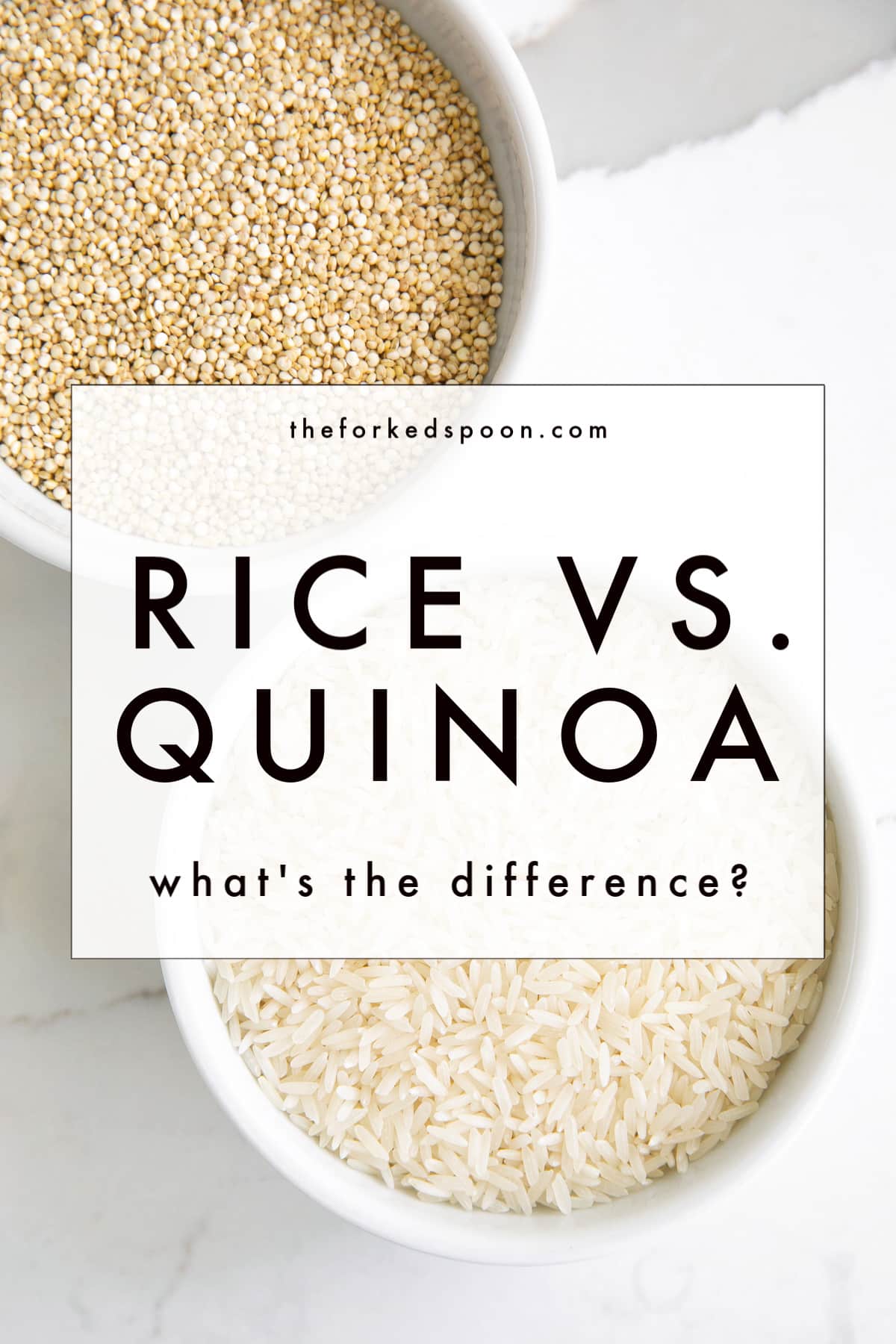
We all know and love rice, the miracle grain that feeds the world and brings us our favorite dishes.
But in recent years, a competitor to rice appeared on the global stage. The quinoa craze began around the turn of the century, but where did it come from, and why did it escalate so fast?
The truth is that this fiber-filled, protein-packed superfood isn’t new. Quinoa has been around for a long time – long before any of us, that’s for sure!
There are tons of interesting and tasty grains making a comeback nowadays, but today we’re going to place quinoa and rice in a head-to-head battle of the ages! We’ll be looking at history, nutritional value information, global markets, and of course, the best recipes for each.
So, let’s not delay any further and start this ingredient showdown!
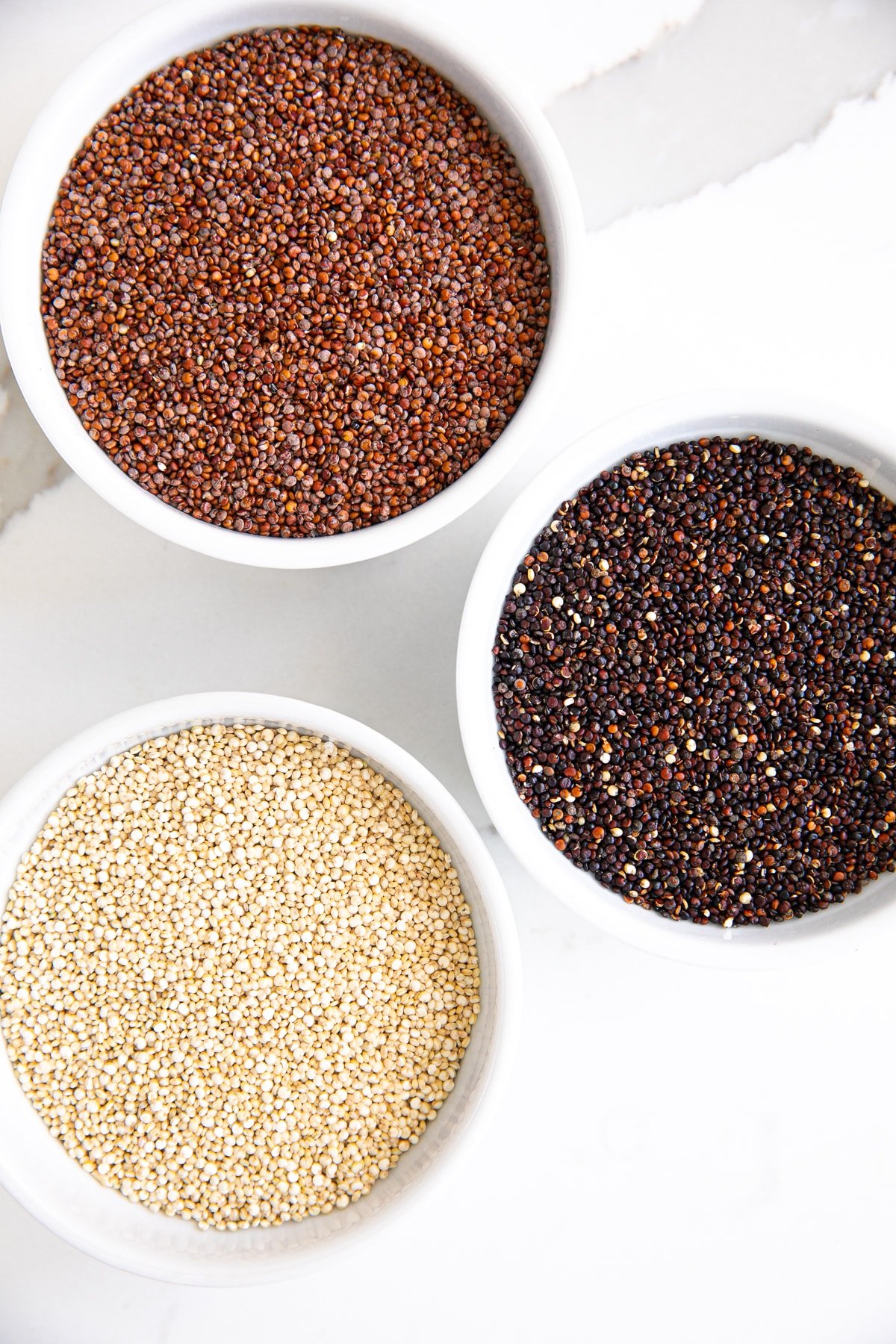
What is Quinoa?
Quinoa (pronounced “kēnwä” or “KEEN-wah”) are the edible seeds of the flowering goosefoot plant and a relative to beets and spinach (crazy, I know).
Technically, quinoa is not a grass, and therefore not a cereal grain, but rather a pseudo-cereal (source). Coming in three main types, red, white, and black, all varieties of quinoa is non-GMO, gluten-free, and while it is not technically a cereal grain, it is still considered a whole-grain food.
Now, some may argue that a comparison of quinoa vs. rice isn’t quite fair. After all, rice is a grain and, well, quinoa is not.
But, given its nutritional profile and how it’s eaten, not to mention that it’s a pseudocereal, this comparison is justified.
A plant originally cultivated in the Andes mountains of South America, quinoa is not a grass, and therefore not a cereal grain, but rather a pseudo-cereal (source). It definitely earns the ancient grains title, as records show its domestication as early as 3000 BCE! From Chile to Peru, all the way to Bolivia, quinoa was once the go-to grain of the continent.
According to the United Nations Agricultural Board, the arrival of Spanish explorers led to the end of quinoa’s cultural significance in South America.
The Spaniards planted cereal grains, and quinoa took a back seat for a while, but it always kept a quiet presence in the background.
In fact, Andean populations continued to domesticate quinoa over the years for various purposes and to adapt to certain ecological conditions like poor soil quality and drought.
Fast-forward, many years later, quinoa is exported to the United States in the mid-80s. Subpar at first, according to an article from Food First, it was not uncommon to find small pebbles in early quinoa batches or have to deal with bitter flavors due to unclean grains.
It did not take long for quinoa producers in South America to get more funding and boost their technological resources, and the next few decades saw exponential increases in production.
Nowadays, it is the ultimate superfood and sees a ton of publicity in health food circles.
Market research shows some mind-boggling data on the quinoa market, which, according to Reports and Data, is predicted to grow at a compound annual growth rate of nearly 13% through 2026! That equates to a market value of almost $150 billion, with production taking place in almost 70 countries.
We are eternally grateful that quinoa came into the picture in the 20th century because it checks all the boxes of delicious, nutritious, and versatile!
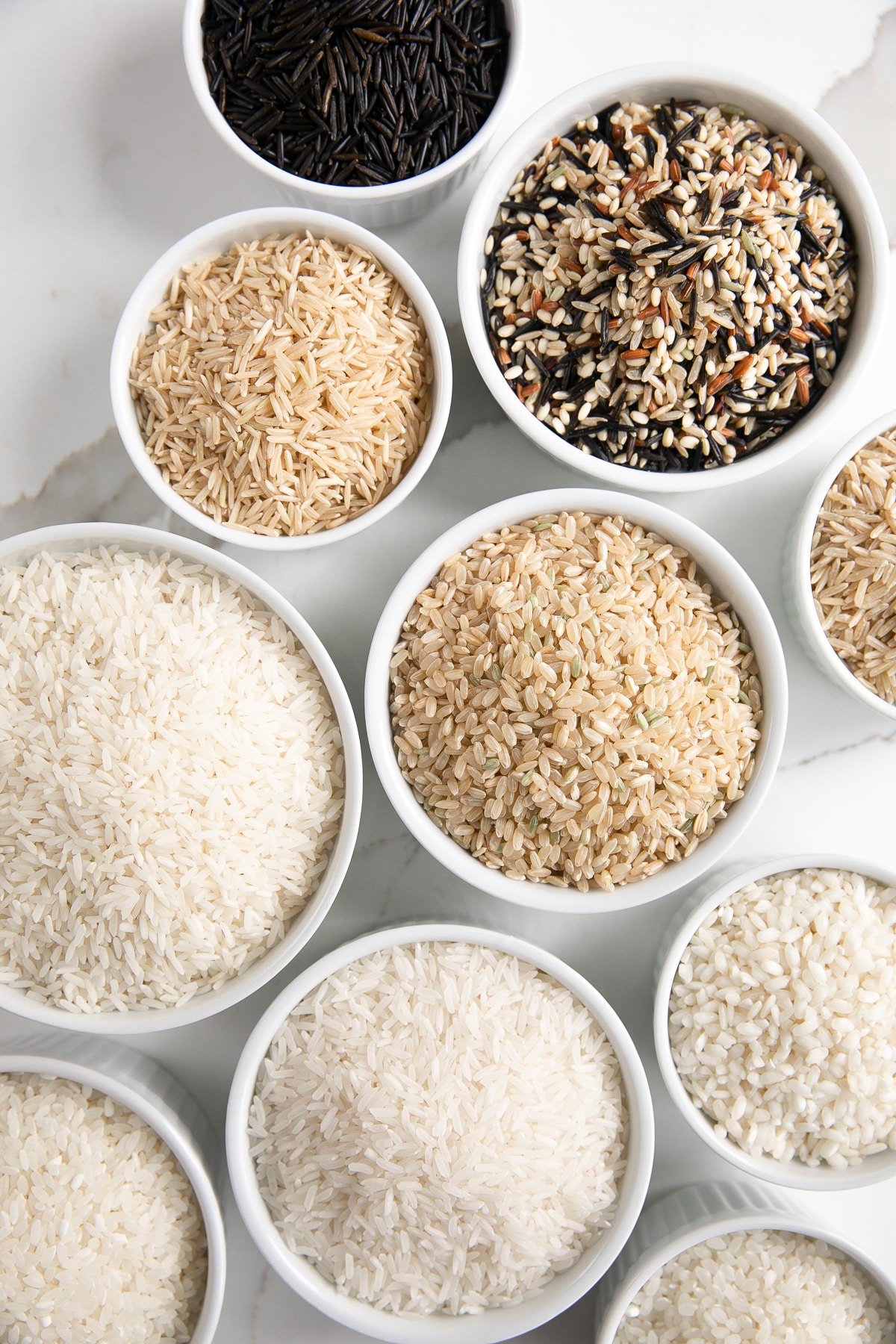
How Does Rice Compare?
It’s hard to compare any food product to the monolith that is rice, but we think quinoa gives this grain giant a real run for its money.
As far as taste and texture are concerned, both rice and quinoa accomplish a similar goal. They provide a fluffy and hearty starch that can be prepared quickly and in many versatile ways.
Rice definitely benefits from the familiarity factor, since it has been a staple food for nearly every culture for centuries.
There is one area where quinoa reigns supreme, however, and that’s health.
According to an article from Pittsburgh-based UPMC, quinoa beats rice at nearly every level of the nutrition debate.
Let’s compare:
For every 1 cup (185 grams) of cooked quinoa (source):
- Calories: 222
- Carbs: 39 grams
- Fat: 4 grams
- Protein: 8 grams
- Fiber: 5 grams
For every 1 cup (185 grams) of cooked brown rice (source)
- Calories: 216
- Carbs: 44.8 grams
- Fat: 2 grams
- Protein: 5 grams
- Fiber: 3.5 grams
For every 1 cup (185 grams) of cooked white rice (source)
- Calories: 205
- Carbs: 44.5 grams
- Fat: 0.4 grams
- Protein: 4 grams
- Fiber: 0.6 grams
As you can see, there is way more protein in quinoa (8 grams per cup) when compared to brown rice (between 4 and 5 grams per cup). Essential amino acids are also far more prevalent in quinoa, as it is one of the few plants on the planet that achieves complete-protein status, meaning it contains all 9 essential amino acids (source). Rice cannot make the same claim.
Brown rice is a great source of dietary fiber compared to quinoa, but only by a little. Quinoa contains fewer total carbs and also has a lower glycemic index than both brown and white rice making it great for those who struggle with high blood sugar, blood pressure, or weight loss. That means the sugars of the starch are broken down and absorbed at a slower rate, reducing unwanted fat stores.
One thing is for sure: quinoa outstrips processed white rice in every aspect. If you’re comparing the health properties of the two, there is one clear winner every time.
In terms of gluten, both foods are completely gluten-free and totally safe for anyone to consume. For vegetarians and vegans especially, quinoa can be a lifesaver, since very few other non-animal products contain such huge levels of protein.
Just like there are countless types of rice to choose from, there are different varietals of quinoa that suit specific needs.
In fact, according to Everyday Health, over 120 types of quinoa have been documented, coming in colors such as white, black, red, yellow, and even purple.
The next time you’re at the store, take a stroll down the quinoa aisle and pick out a few fun-colored bags, then cook up a batch to see how the flavors and textures differ from one to the next.
You’ll be surprised to discover how much variation exists between each type, with different degrees of crunch, sweetness, and fluff.
New products are coming out all the time that harness the power of quinoa, as well. So keep your eyes open for quinoa flour, chips, and cereal flakes that offer a healthy alternative to the gluten-packed sugar bombs that we’ve become accustomed to in the west.
Quinoa vs. Rice Recipes
We have a basic understanding of how quinoa and rice compare, but what about recipes? Nutrition is important, but you want to know how each grain is best used in making tasty dishes.
For many recipes, quinoa and rice can be easily interchanged. That is the beauty of ancient grains that you need to embrace!
Our popular creamy chicken and wild rice soup is a great example of a hearty dish where quinoa can take center stage instead of rice. You can even make a gluten-free version that doesn’t compromise on flavor and nutrition.
If you want to introduce quinoa to the family in a not-so intimidating way, we recommend starting with an easy Mexican Quinoa Casserole. It has enough cheese and spicy flavor to ease any suspicion of a new ingredient, and we guarantee the whole family will be happy about it!
Another recipe that brings out the best in this ancient grain is our stuffed bell peppers. They require a bit more prep than some of our other dishes, but the steps are easy to follow, and you will see first-hand just how perfect the light and fluffy quinoa meshes with the rest of the ingredients.
There are also some recipes where quinoa fills in the gaps where rice cannot. Try out our blueberry breakfast quinoa or nut bars, and you’ll see just how easy it is to pack a morning meal with extra protein and fresh fruit. Of course, there is also a place for rice in breakfast foods, as proven in Asian culture with dishes like congee, a thick gruel or porridge made from glutinous rice and chicken broth.
Smoothies are another great occasion to incorporate quinoa in an unlikely situation. This green smoothie recipe is a fan favorite that can benefit from a small scoop of quinoa instead of rolled oats. That’s a role where rice simply wouldn’t fit!
If there’s one dish where quinoa rises above the rest, it’s the almighty grain bowl, also known as the Buddha Bowl, Hippie Bowl, or Macro Bowl.
Call it whatever you want, but these healthy and delicious bowls are truly the perfect showcase for the versatility of quinoa. You can use whatever seasonal ingredients you have available, and balance out the macronutrients to fit your exact dietary needs.
The formula is simple. Start with the grains, then add your favorite vegetables, proteins, healthy fats, and dressing. Beyond that, there are no rules! For a bit of inspiration, we suggest starting with this poke bowl recipe. It will give you the basic equation for making your own creations in the future and remixing old classics!
Continue Reading:
How to Cook Brown Rice (2 Ways!)
How to Cook Perfect Rice on the Stove

Conclusion
It may have taken a while for quinoa to make its way to the mainstream, but there’s no doubt that this superhero grain is here to stay.
Will it overtake rice as the world’s most popular starch? Probably not. But we’re expecting its popularity to rise even further as home cooks discover its potential.
We know that the whole ancient grain thing can seem a bit intimidating, with a bunch of strange names and unusual preparations. But trust us, just start with quinoa, and you’ll see for yourself just how easy it can be to branch out.
We will definitely be broadcasting the benefits of quinoa and other cool new (old) grains here at the Forked Spoon, so be sure to follow us on social media and stay tuned for more!

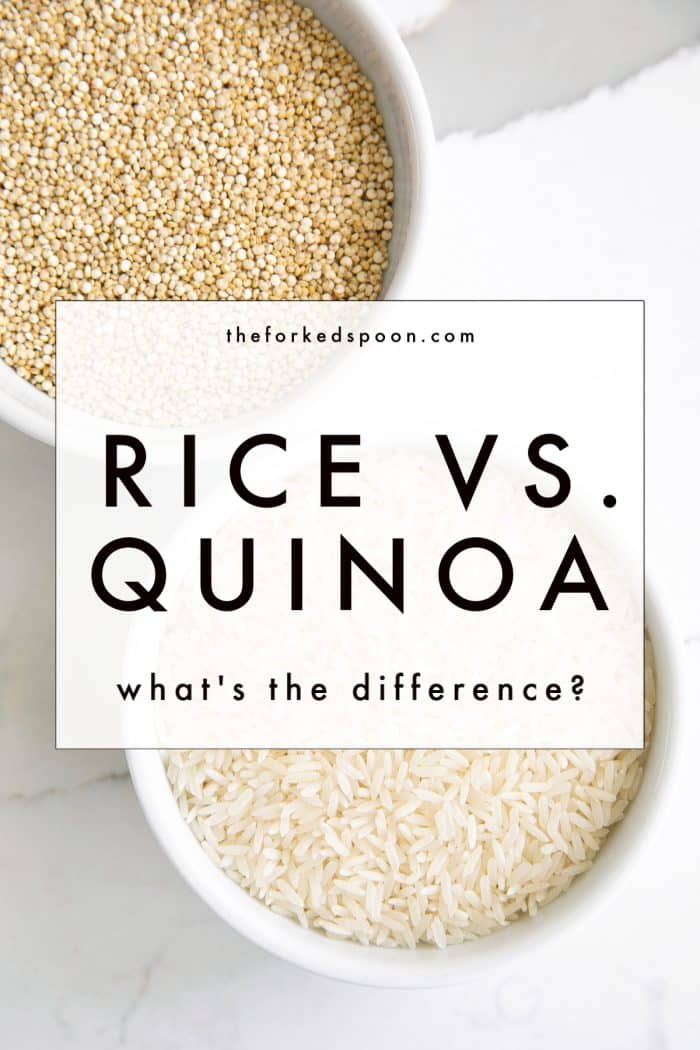

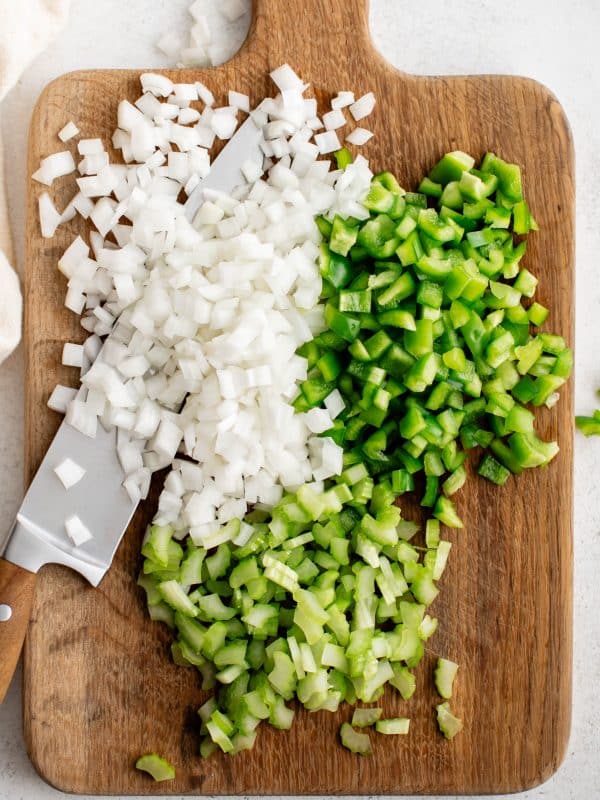
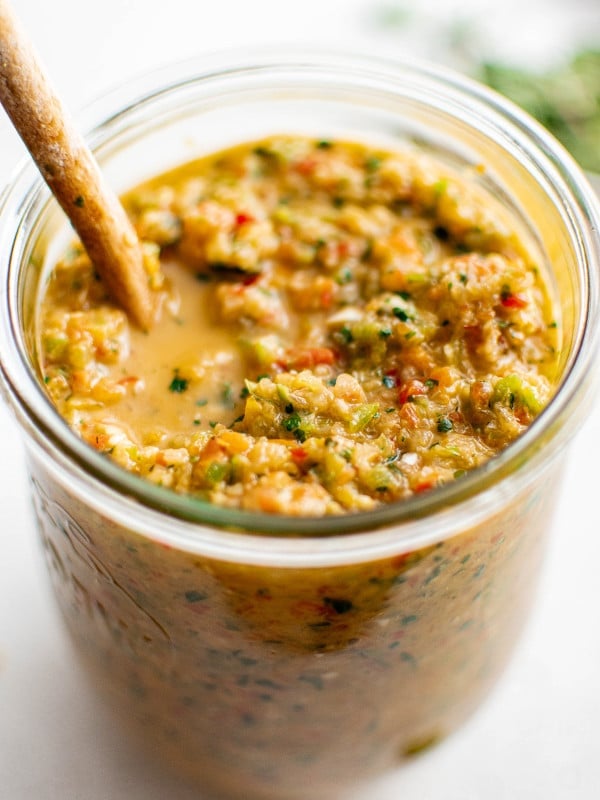

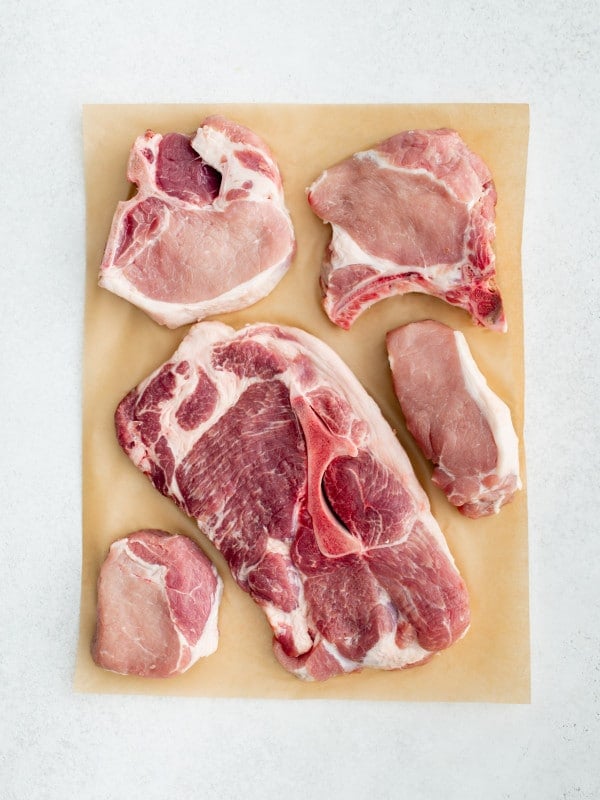








Thanks for this great article. I look forward to quinoa recipes.